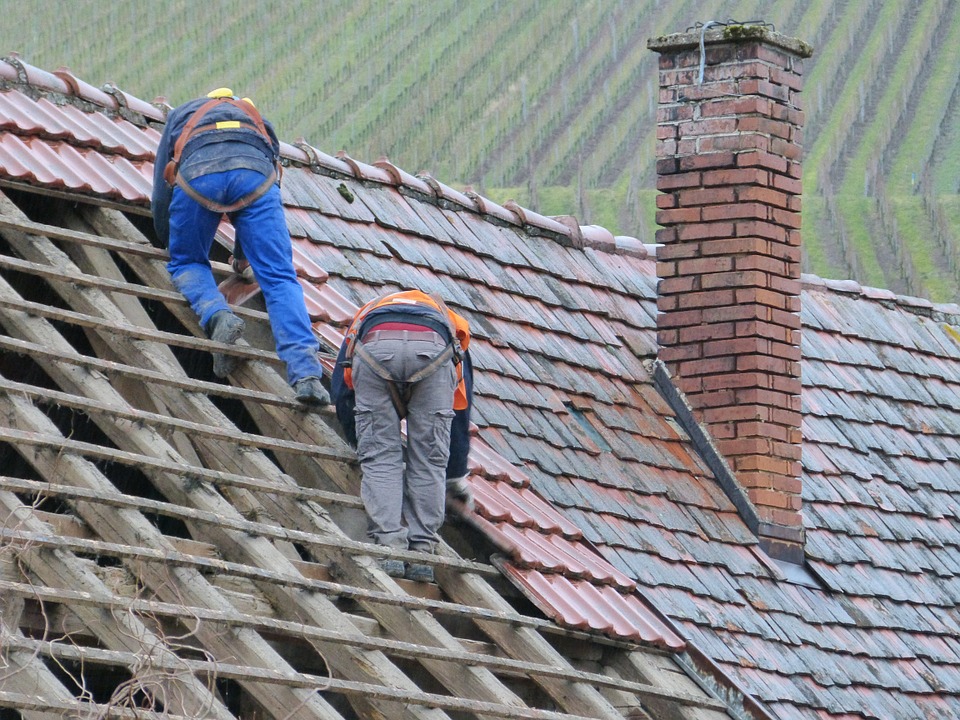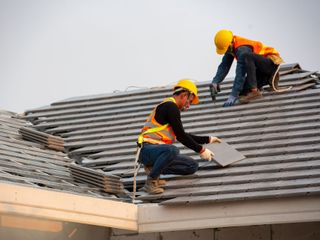Just How to Examine Different Roof Covering Choices for Your Structure Demands
Assessing roof covering choices for your structure calls for a thorough technique that thinks about numerous factors such as the planned usage of the structure, neighborhood climate problems, and product qualities - Toledo Roofer. It is crucial to evaluate the advantages and disadvantages of different roof kinds, from asphalt roof shingles to metal and clay tiles, while additionally factoring in preliminary expenses and long-term maintenance.
Assessing Your Building's Demands
To efficiently evaluate roofing options, begin by completely analyzing your building's requirements. Start by thinking about the building's planned usage, as different structures might necessitate differing roofing specs. Domestic roofings commonly prioritize aesthetic appeals and insulation, while business buildings may concentrate on resilience and load-bearing capacity.
Next, examine the neighborhood climate problems that will impact roof covering performance. Variables such as temperature level variations, rainfall degrees, and wind patterns can influence product selection and layout. A roof that stands out in a warm climate may not perform as well in areas susceptible to heavy snowfall or extreme heat.
In addition, examine the structural honesty of your building. Make sure that the existing framework can support the selected roof covering materials, specifically if taking into consideration much heavier choices. It is also crucial to review any kind of regional building regulations or regulations that may dictate details demands for roof.

Comparing Roof Covering Materials
Once an extensive evaluation of your structure's needs has been completed, the next step involves comparing numerous roof products. Each material supplies unique benefits and disadvantages, making it necessary to straighten your selection with your details needs and scenarios.
Asphalt tiles are extensively acknowledged for their price and ease of installment, making them a popular alternative for residential structures. On the other hand, metal roof covering, known for its resilience and long life, can endure harsh climate conditions but may feature a greater preliminary investment.
Clay and concrete floor tiles offer outstanding thermal insulation and visual charm, specifically for Mediterranean-style style, yet they require a more durable architectural assistance due to their weight. Wood shakes offer a natural look and good insulation residential properties but may demand extra maintenance and are vulnerable to fire threats.
Reviewing Expense and Budget Plan
Evaluating your roof options necessitates a careful evaluation of expense and budget plan factors to consider. The general budget for a roof covering project makes up numerous elements, consisting of material expenses, labor expenses, maintenance, and potential long-lasting cost savings. It is important to develop a clear spending plan before discovering particular roof covering products, as this will certainly lead the decision-making procedure and help you stay clear of overspending.
Begin by obtaining quotes from numerous professionals to comprehend labor prices in your region. Guarantee that these quotes include all required services, such as removal of the old roofing, installment, and any additional attributes, like insulation or ventilation improvements - Roofer. Next, evaluate the read more price of different roof covering materials, considering both preliminary installation expenses and anticipated life-span

Recognizing Energy Efficiency
Energy performance plays a crucial role in the selection of roof materials and systems, significantly affecting both power usage and total comfort within a structure. An appropriate roof can improve thermal efficiency, reducing the need for heating and cooling down systems, which subsequently decreases power expenses and reduces ecological impact.
When evaluating roofing choices, think about products that reflect instead than absorb warm. Light-colored or reflective roof covering products can substantially decrease roofing surface area temperature levels, bring about lower power usage throughout hot months. In addition, correct insulation and ventilation are necessary to enhance the energy efficiency of the entire roof covering system. Insulation stops warmth transfer, while ventilation alleviates warmth build-up in the attic room space.
One more crucial variable is the roof's longevity and upkeep needs. Long lasting materials that call for less regular replacement contribute to long-lasting energy savings. The energy performance of a roof system can also be analyzed with its compliance with recognized sustainability scores such as ENERGY STAR or LEED.
Considering Visual Charm
A roof covering's visual allure substantially affects the overall look of a building, enhancing its building style and enhancing visual allure. Toledo Roofer. When assessing roof options, it is important to take into consideration just how the selected product, color, and style will certainly balance with straight from the source the existing structure and neighborhood. A properly designed roofing can elevate even the simplest of buildings, changing them into aesthetic focal points
Various roof covering materials use various visual qualities. For instance, typical tiles might evoke a traditional charm, while steel roof covering can give a modern-day, sleek look. Furthermore, the shade of the roof covering material plays a vital role; lighter tones can make a building show up more large, while darker tones might develop a cozier atmosphere.
Additionally, building elements, such as dormers and eaves, can enhance the roofing system's aesthetic influence. It is recommended to speak with expert developers or designers to make her explanation sure the picked roof choice lines up with the general style intent. Ultimately, a roof covering needs to not just supply functional advantages however likewise contribute favorably to the building's visual, showing the owner's preference and the personality of the surrounding environment.
Conclusion
